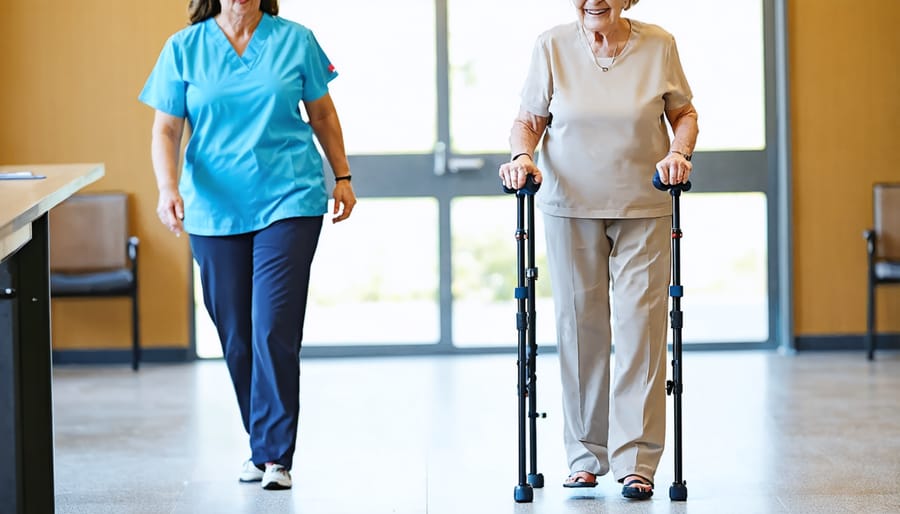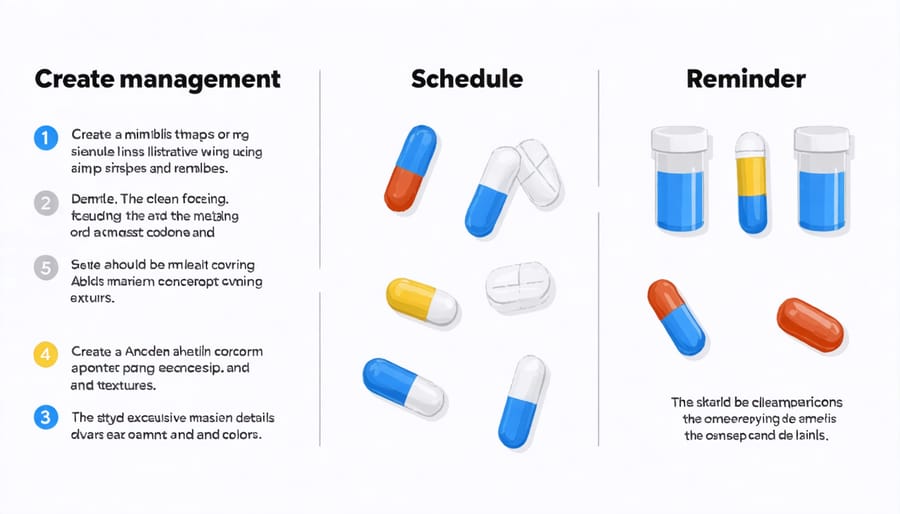The “5Ms” framework revolutionizes how we approach geriatric care, offering a comprehensive lens through which healthcare providers can better serve our aging population. Mind, Mobility, Medications, Multi-complexity, and what Matters Most form the cornerstone of modern geriatric assessment, moving beyond traditional symptom-based treatment to embrace whole-person care. This evidence-based approach, developed by experts in geriatric medicine, helps practitioners identify and address the unique challenges faced by older adults while honoring their individual goals and preferences. Whether you’re a healthcare professional, caregiver, or someone interested in understanding age-related healthcare, mastering the 5Ms framework provides essential tools for promoting healthy aging and maintaining quality of life. By examining these five key areas, practitioners can develop more effective, personalized care strategies that address both the medical and personal needs of older adults.
Mind: Protecting Cognitive Health in Aging
Common Cognitive Concerns
As we age, changes in cognitive function are common and can range from mild forgetfulness to more serious concerns. Understanding these changes is crucial for maintaining independence and quality of life in older adults. While some degree of cognitive slowing is normal with aging, it’s important to recognize the early warning signs of cognitive decline that may require medical attention.
Common cognitive changes that warrant assessment include difficulty with short-term memory, challenges in planning or organizing daily activities, problems with language or communication, and decreased judgment or decision-making abilities. These changes might manifest as forgetting appointments, misplacing items more frequently, or having trouble following conversations or recipes.
It’s particularly concerning when cognitive changes interfere with daily activities or when family members notice significant differences in behavior or capabilities. Some red flags include getting lost in familiar places, struggling with financial management, or showing personality changes.
Regular cognitive assessments are essential for early detection and intervention. Healthcare providers can use various screening tools to evaluate memory, attention, language, and problem-solving abilities. Early identification allows for better management strategies and support systems to be put in place, helping maintain independence and quality of life for as long as possible.

Practical Brain Health Strategies
Maintaining brain health is crucial for healthy aging, and there are several proven strategies you can implement daily. Regular physical exercise, particularly aerobic activities like walking or swimming, has been shown to improve cognitive function and reduce the risk of dementia. Aim for at least 150 minutes of moderate activity per week.
Social engagement plays a vital role in brain health. Participating in community activities, joining clubs, or regularly connecting with family and friends helps maintain cognitive function and emotional well-being. Consider exploring evidence-based mental health treatments if you’re experiencing mood changes or cognitive concerns.
Mental stimulation through activities like puzzles, reading, learning a new language, or playing musical instruments can help maintain cognitive reserves. A brain-healthy diet rich in omega-3 fatty acids, antioxidants, and whole grains supports optimal brain function. The Mediterranean diet, in particular, has shown promising results in cognitive health studies.
Quality sleep is equally important – aim for 7-8 hours nightly and maintain a consistent sleep schedule. Managing stress through relaxation techniques like meditation or deep breathing exercises can also protect brain health and improve overall mental well-being.
Mobility: Maintaining Independence and Preventing Falls
Fall Risk Assessment
Falls are a serious concern for older adults, potentially leading to injury, loss of independence, and reduced quality of life. A thorough fall risk assessment involves evaluating several key factors that might contribute to falls. Healthcare providers typically check balance and gait, review medications that could affect coordination, and assess vision and home safety.
The assessment usually begins with asking about previous falls and current concerns about balance. Physical tests like the “Timed Up and Go” test, where a person stands from a chair, walks a short distance, and returns to sitting, can reveal mobility issues. Healthcare providers also examine muscle strength, particularly in the legs, and assess coordination.
Environmental factors play a crucial role in fall prevention. This includes checking home lighting, removing trip hazards like loose rugs, and ensuring proper footwear. Medical conditions that might increase fall risk, such as low blood pressure, vision problems, or arthritis, are also evaluated.
Based on the assessment results, healthcare providers develop personalized fall prevention strategies. These might include exercise programs to improve strength and balance, medication adjustments, vision correction, or home modifications. Regular reassessment helps track progress and adjust interventions as needed.
Exercise and Balance Training
Regular physical activity is essential for maintaining independence and reducing fall risks in older adults. A well-rounded exercise program should include four key components: strength training, balance exercises, flexibility work, and cardiovascular activities.
For strength training, seniors should focus on exercises they can perform safely while seated or with proper support, such as chair rises, wall pushups, and resistance band exercises. These activities help maintain muscle mass and bone density, which naturally decline with age.
Balance training is particularly crucial for fall prevention. Simple exercises like standing on one foot while holding onto a sturdy chair, walking heel-to-toe, or gentle tai chi movements can significantly improve stability. These exercises should be done in a safe environment with proper support nearby.
Before starting any exercise program, older adults should consult their healthcare provider to ensure activities are appropriate for their fitness level and medical conditions. Starting slowly and gradually increasing activity levels is recommended, aiming for at least 150 minutes of moderate exercise per week.
Activities should be enjoyable and social when possible, as this increases long-term adherence to exercise programs. Group classes designed specifically for seniors can provide both physical benefits and social interaction while ensuring proper supervision and safety.

Medications: Smart Medication Management

Medication Review Essentials
Regular medication reviews are crucial for older adults’ health and well-being. This involves carefully examining all prescriptions, over-the-counter medications, and supplements to ensure they’re necessary and working together safely. Healthcare providers should check for potentially inappropriate medications, drug interactions, and proper dosing based on the person’s age and kidney function.
Key aspects of medication review include:
– Creating an up-to-date list of all medications
– Evaluating each medication’s purpose and continued need
– Checking for duplicate therapies or unnecessary medications
– Assessing for potential side effects and adverse reactions
– Considering age-appropriate alternatives when needed
It’s important to discuss any concerns about medications with healthcare providers, including difficulties with taking pills, cost issues, or experienced side effects. Regular reviews help prevent medication-related problems and ensure optimal treatment benefits. Whenever possible, the goal should be to reduce the number of medications to only those absolutely necessary, a process known as deprescribing.
Remember to keep all medications in their original containers, maintain an updated medication list, and bring all current medications to medical appointments for review.
Avoiding Medication Pitfalls
Medication management becomes increasingly complex as we age, with many older adults taking multiple prescriptions daily. Common pitfalls include mixing medications that shouldn’t be taken together, incorrect dosing, and forgetting to take medications on schedule. To avoid these issues, it’s essential to maintain an up-to-date list of all medications, including over-the-counter drugs and supplements.
Working with your healthcare provider and pharmacist is crucial for medication safety. They can review your medications regularly to ensure they’re still necessary and check for potential interactions. Consider using medication organizers or reminder systems to stay on track with dosing schedules.
Some medications that are generally safe for younger adults may pose increased risks for seniors. These include certain sleep aids, anti-anxiety medications, and pain relievers. Always discuss any new symptoms or side effects with your healthcare provider, and never stop taking prescribed medications without professional guidance.
When visiting different healthcare providers, bring your complete medication list to ensure all your care team members are aware of what you’re taking. This helps prevent duplicate prescriptions and potentially harmful drug interactions.
Multicomplexity: Managing Multiple Health Conditions
Coordinated Care Approaches
Effective geriatric care requires a well-orchestrated team approach, especially when managing multiple medical conditions. A coordinated care plan typically involves primary care physicians, specialists, nurses, physiotherapists, occupational therapists, and social workers working together to address all aspects of a senior’s health.
Key strategies include maintaining a centralized medical record, establishing clear communication channels between healthcare providers, and designating a care coordinator who oversees the overall treatment plan. Regular team meetings help ensure all providers are aligned in their approach and can adjust treatments as needed.
Family members and caregivers play a crucial role in this coordination by keeping track of medications, appointments, and daily care routines. Using tools like shared calendars, medication organizers, and care journals can help streamline communication between all parties involved.
Digital health platforms and telemedicine options are increasingly being used to facilitate better coordination, allowing healthcare providers to share information and monitor progress more effectively while making care more accessible for seniors with mobility challenges.
Self-Management Strategies
Managing multiple health conditions in older age requires a balanced, practical approach. Start by maintaining a detailed health diary to track symptoms, medications, and daily activities. This helps identify patterns and potential triggers that affect your well-being.
Create a medication management system using pill organizers or smartphone apps to ensure proper timing and dosage. Set regular reminders for important health-related tasks, including exercise, meals, and medical appointments.
Stay physically active within your capabilities through gentle exercises like walking, swimming, or chair yoga. Regular movement helps maintain mobility and independence while reducing the risk of falls.
Establish a strong support network of family members, friends, and healthcare providers. Don’t hesitate to ask for help when needed, especially with complex tasks or during challenging times.
Keep your living space organized and safe by removing trip hazards, installing proper lighting, and using assistive devices when necessary. Regular health check-ups and open communication with your healthcare team ensure that your care plan remains effective and appropriate for your changing needs.
Matters Most: Focusing on What’s Important
Goal Setting in Senior Care
Goal setting in senior care requires a personalized approach that considers individual capabilities, preferences, and health conditions. The key to success lies in setting achievable health goals that promote independence while maintaining safety and well-being.
Start by working with your healthcare provider to identify priorities based on current health status and concerns. Focus on specific, measurable objectives that address daily activities, physical function, and quality of life. For example, rather than setting a vague goal like “improve mobility,” aim for something concrete like “walk independently to the mailbox three times per week.”
Consider breaking larger goals into smaller, manageable steps that provide a sense of accomplishment and motivation. Include both short-term targets (such as maintaining medication schedules) and long-term aspirations (like participating in family events). Regular review and adjustment of these goals ensure they remain relevant and attainable as health needs evolve.
Remember to celebrate progress and maintain open communication with healthcare providers and family members about goal achievements and challenges.
Quality of Life Considerations
When addressing geriatric care, quality of life should always be at the forefront of medical decisions. While treating health conditions is essential, it’s equally important to consider how interventions affect an older person’s happiness, independence, and daily activities. This means finding the right balance between managing medical conditions and maintaining life satisfaction.
Healthcare providers should engage in meaningful discussions with patients and their families about personal goals, values, and preferences. Some older adults might prioritize staying in their own home over aggressive medical treatments, while others may choose to focus on maintaining social connections and hobbies they enjoy.
The key is to develop care plans that align with these individual preferences while addressing health concerns. This might involve modifying treatment approaches to minimize side effects, scheduling medical appointments in ways that don’t disrupt important daily routines, or finding alternatives to medications that affect cognitive function or mobility.
By considering both medical needs and quality of life factors, healthcare providers can deliver more personalized, effective care that truly serves the whole person.
The 5Ms framework represents a significant advancement in how we approach geriatric care, offering a practical and comprehensive method to address the unique healthcare needs of older adults. By focusing on Mind, Mobility, Medications, Multi-complexity, and what Matters Most, healthcare providers and caregivers can deliver more personalized and effective care that truly makes a difference in seniors’ lives.
Understanding and implementing the 5Ms helps ensure that no important aspect of geriatric care is overlooked. This framework encourages healthcare providers to move beyond treating individual symptoms and instead consider the whole person, their goals, and their quality of life. It also empowers older adults and their families to actively participate in healthcare decisions and communicate their preferences more effectively.
Moving forward, healthcare providers should integrate the 5Ms into their regular assessments and care planning. Families and caregivers can use this framework as a checklist when discussing care with medical professionals or monitoring their loved one’s well-being. Regular reviews of each ‘M’ component can help identify potential issues early and prevent complications.
Remember that successful implementation of the 5Ms requires ongoing communication, regular assessment, and adjustment of care plans as needs change. By embracing this framework, we can work together to improve the quality of care for older adults and help them maintain their independence and dignity as they age.

